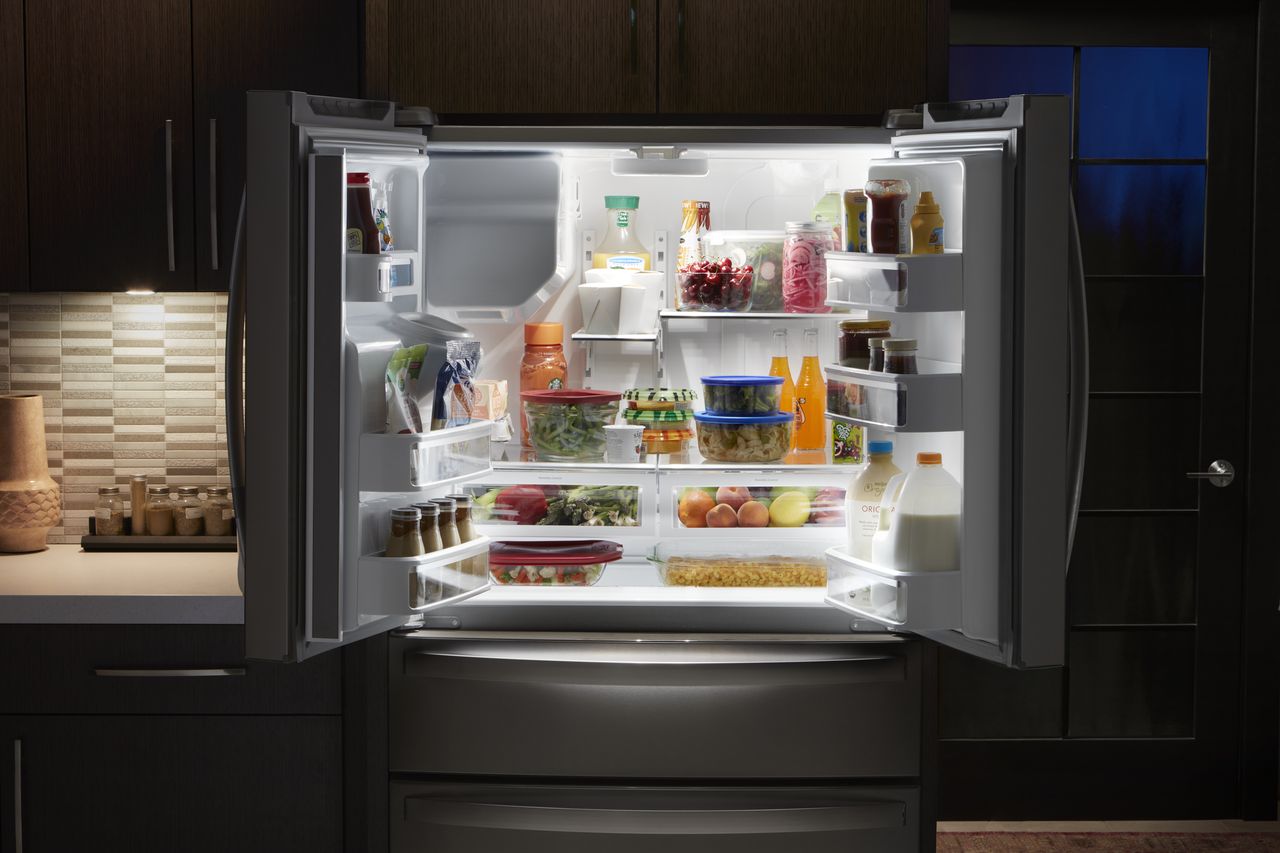
The refrigerator is the lynchpin of the modern kitchen. Without it, we would be back to the days of root cellars and daily trips to the supermarket. However, while even the most ignored refrigerators will keep struggling along for awhile, simple maintenance at a daily or even monthly level can help keep your refrigerator cooling food efficiently and lasting longer in between repairs.
Daily Refrigerator Maintenance
No one is going to perform a maintenance task for their refrigerator every day, but there are a few small things you can do on a day-by-day basis to help it along without much effort on your part.
- Cover Your Food – Most users don’t put uncovered food in their refrigerator because it will absorb the smells wafting around inside there. However, by covering your food, it goes a long way in preventing those smells in the first place. A thin layer of cling wrap can make all the difference. Adding an open box of baking soda in your refrigerator can help combat smells too, but it needs to be changed on a monthly basis.
- Assure Proper Clearance – You want your refrigerator out of the way, but it needs some room to breathe. Locate the vents on your refrigerator and make sure they are always clear and able to function properly. This also goes for inside your refrigerator as well, the vents need space to circulate the cool air inside.
- Fill Your Refrigerator – A full refrigerator is an efficient refrigerator. The cold food within helps keep the refrigerator colder, longer so it doesn’t need to run as much. However, do prevent overfilling and blocking the vents on the interior.
- Keep Hot Food to a Minimum – Placing hot food inside your refrigerator will produce condensation on the inside, which can cause mildew growth.
- Keep the Door Closed – If you like to sit and ponder food choices, be as quick as possible about it. The longer the door is open, the more cold air escapes and the more hot air gets in. This can cause condensation and causes the refrigerator to have to run more often.
- Set the Temperature – A refrigerator should run at between 37 to 40 degrees Fahrenheit while a freezer should stay at around 0. You can easily keep track of this with an inserted thermometer if your refrigerator doesn’t already have one. These temperatures keep food at safe ranges without it getting too hot or too cold. If you notice food in your refrigerator freezing, you may want to turn the temperature up just a bit. Often times, we can accidentally hit the temperature adjustment by accident when loading food in, and this can cause these issues. Though if the temperature manifest incorrectly no matter what you do with the adjustment dial, you may need a repair.
Monthly Maintenance
While day-to-day maintenance is small tasks you can do, monthly maintenance tasks are the most crucial if you want to keep a healthy refrigerator.
- Inspect the Gasket – The rubber seal that runs around the edges of the door serves as a seal to keep cold air in and warm air out when the refrigerator is closed. However, over time, it can become brittle and crack or can simply form gaps from damage. Inspect this seal visually on a monthly basis. If it is damaged, you may also notice condensation inside and outside of your refrigerator.
- Clean the Condenser Coils – Located on the back of the refrigerator (or bottom on some models), the condenser coils condense refrigerant and release heat. If they become caked with dust or other debris, this increases the stress on the compressor, wasting energy and wearing your refrigerator down faster. Cleaning can be easily done with a vacuum brush attachment for your hose. However, be careful not to do this too aggressively so as to not damage the coils.
- Cleaning – Cleaning the interior and exterior of your refrigerator is crucial to preventing mildew growth and keeping your food safe. For stainless steel models, it can also prevent rust on the exterior and gets rid of ugly fingerprints that are the bane of stainless steel appliances.
- Check the Drip Pan – Any condensation that does appear inside the refrigerator is naturally drained away into a drip pan. Typically, this moisture will evaporate, but if your drip pan is filled with lingering water, it can be the sign of a problem. Furthermore, standing water is never good to keep around. If you have water pooling inside a refrigerator, you may want to check the drain hole for blockages.
Bi-Yearly Maintenance
There are some maintenance tasks that need not be done often, but should be done every six months just to make sure everything is working as intended.
- Change the Water Filter – If you have a built-in water dispenser, the water filter needs to be changed every six months. If you use the water dispenser quite a bit, you may even need to replace it as soon as every three months.
- Defrost If Needed – Most modern refrigerators has built-in defrost that prevents the freezer from getting too icy. However, if yours does not have this feature, you need to defrost it every so often. Don’t try to scrape away the frost build up so as to not damage the freezer. You can, however, speed it up by placing a fan so that air is circulated inside it.
- Check For Level – This need not be done every six months, but should be done at least every year. You simply need to place a level on top of your refrigerator to check if it is level. Surprisingly, even just slightly out of level refrigerators place more strain on the motor and other functions. It also can weaken the door seal. If you had any sort of leaking problem in the past year, this becomes even more important as water can warp the flooring underneath. Fixing a refrigerator that is not level can be done by simply adjusting the feet underneath, though the cause of uneven leveling will need to be addressed as well.

Your Guide to Whirlpool Microwave Replacement Parts

What to Do When Your Kenmore Dryer Won’t Start

How to Resolve the LG Washer LE Error Code

Why Does My Oven Smell Like Gas? Causes and What to Do

Maytag Dryer Not Heating? Here’s How to Fix It

6 Common Reasons Your Speed Queen Dryer Isn’t Heating

8 Reasons Your Samsung Refrigerator Is Not Cooling

9 Most Reliable Washer and Dryer Brands

How to Get Ink out of Your Dryer the Easy Way

Why Is My Fridge Making Noise That Stops When the Door Is Open?

Frigidaire Refrigerator Error Code H1: Causes & Solutions

How to Clean a Dryer Vent Without Moving the Dryer

9 Reasons Your LG Refrigerator Isn’t Cooling

LG Refrigerator Not Making Ice? Here’s What To Do!


